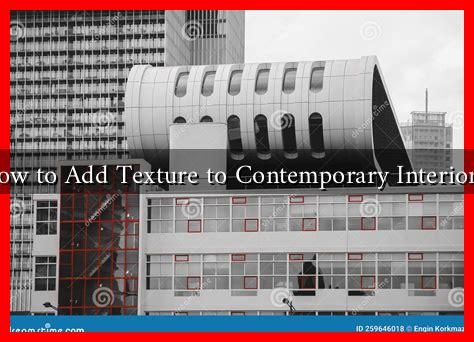-
Table of Contents
How to Add Texture to Contemporary Interiors
Contemporary interior design is often characterized by clean lines, minimalism, and a neutral color palette. However, one of the most effective ways to elevate a contemporary space is by incorporating texture. Texture adds depth, warmth, and interest, transforming a flat, sterile environment into a dynamic and inviting one. In this article, we will explore various methods to add texture to contemporary interiors, supported by examples and insights.
The Importance of Texture in Design
Texture plays a crucial role in interior design for several reasons:
- Visual Interest: Texture can break the monotony of a space, making it visually appealing.
- Emotional Impact: Different textures evoke different feelings; for instance, soft fabrics can create a sense of comfort.
- Layering: Texture allows for layering, which can add complexity and richness to a design.
According to a study by the American Society of Interior Designers, 70% of designers believe that texture is essential for creating a cohesive and inviting space. This statistic underscores the importance of texture in contemporary interiors.
Ways to Incorporate Texture
Here are several effective strategies to add texture to contemporary interiors:
1. Textured Wall Finishes
Walls are a blank canvas that can significantly influence the overall feel of a room. Consider the following options:
- Textured Paint: Use paint with a matte finish or apply techniques like sponging or rag rolling to create depth.
- Wall Panels: Wood, metal, or fabric wall panels can add dimension and interest.
- Wallpaper: Choose wallpapers with raised patterns or textures to create a focal point.
For example, a living room with a textured accent wall can serve as a stunning backdrop for minimalist furniture, enhancing the overall aesthetic.
2. Layering Fabrics
Fabrics are an excellent way to introduce texture into a space. Consider layering different materials:
- Cushions and Throws: Mix and match cushions made from velvet, linen, and cotton to create a cozy atmosphere.
- Rugs: Use area rugs with varying textures, such as shag or woven styles, to define spaces and add warmth.
- Window Treatments: Layer sheer curtains with heavier drapes to create depth and softness.
For instance, a contemporary sofa adorned with a variety of textured cushions can transform a simple seating area into a stylish retreat.
3. Incorporating Natural Elements
Natural materials can add organic texture to contemporary interiors. Consider the following:
- Wood: Use reclaimed wood for furniture or accent walls to introduce warmth and character.
- Stone: Incorporate stone elements, such as a fireplace or countertops, for a rugged yet refined look.
- Plants: Adding greenery not only brings life to a space but also introduces a natural texture.
A case study from a recent interior design project in San Francisco showcased how the use of reclaimed wood and stone in a contemporary kitchen created a harmonious balance between modernity and nature.
4. Artistic Touches
Art can serve as a powerful textural element in contemporary interiors. Consider these options:
- Sculptures: Three-dimensional art pieces can add depth and intrigue.
- Textured Artwork: Choose paintings or prints that incorporate mixed media or raised elements.
- Wall Hangings: Tapestries or woven wall art can introduce softness and texture.
For example, a large, textured wall hanging can serve as a stunning focal point in a minimalist room, drawing the eye and adding interest.
Conclusion
Incorporating texture into contemporary interiors is essential for creating a balanced and inviting space. By utilizing textured wall finishes, layering fabrics, incorporating natural elements, and adding artistic touches, you can transform a sterile environment into a warm and dynamic one. Remember, the key is to create a harmonious blend of textures that complement the overall design while adding depth and interest. As you embark on your design journey, consider these strategies to elevate your contemporary interiors and make them truly unique.
For more inspiration on interior design, visit Architectural Digest.

